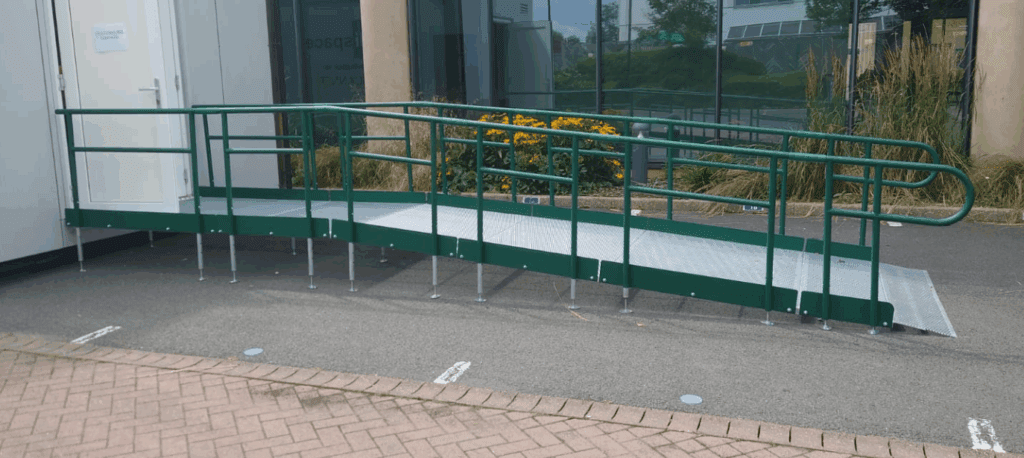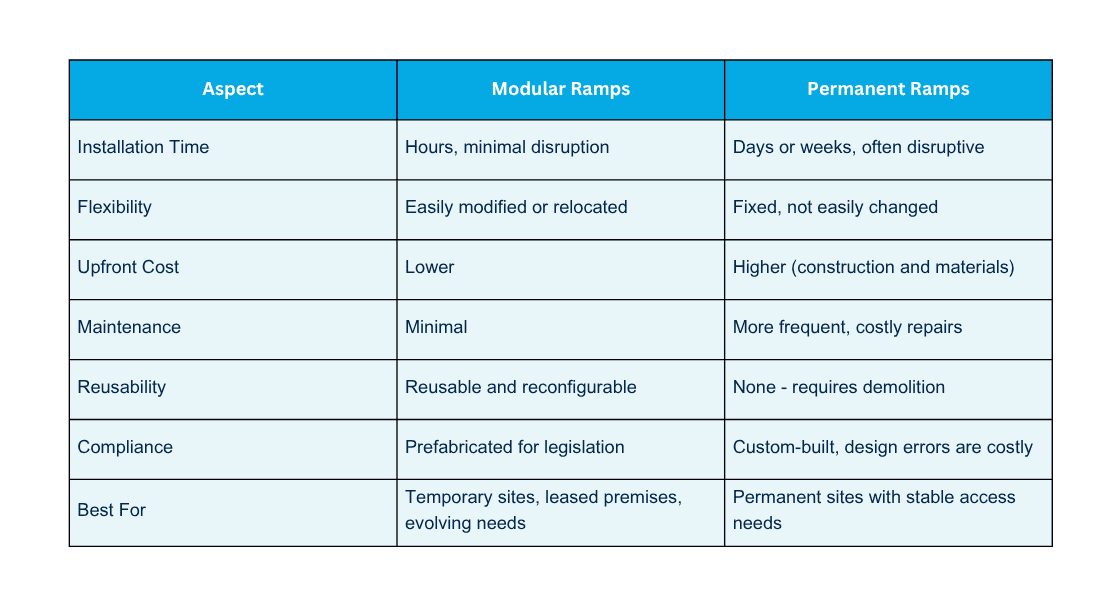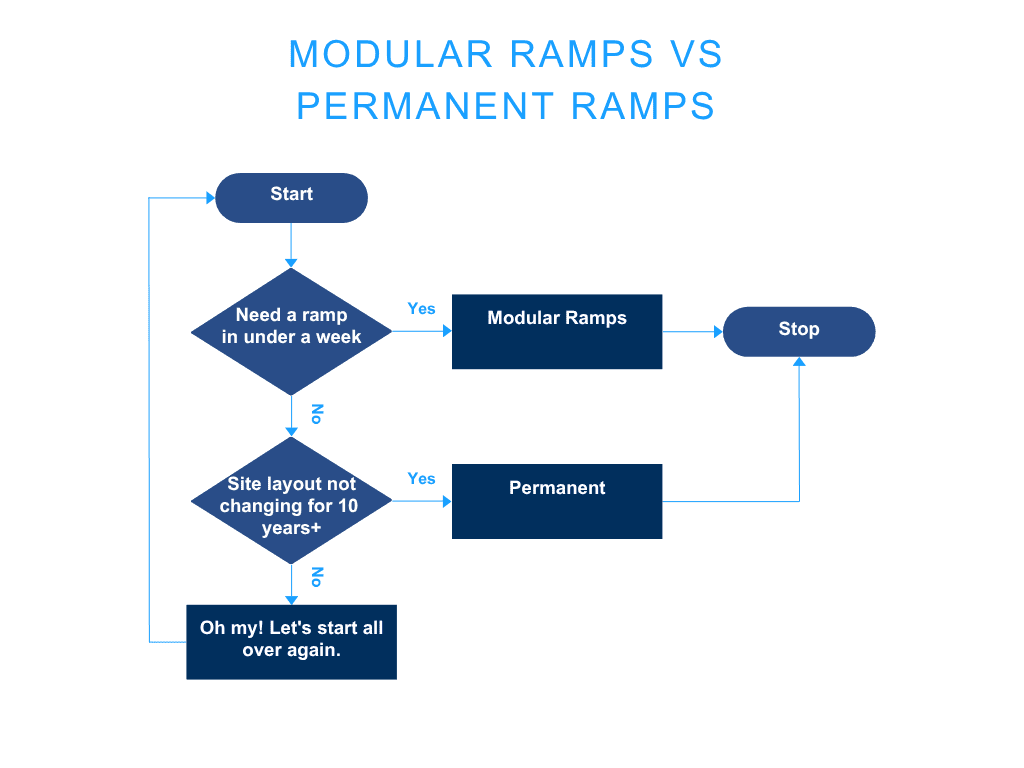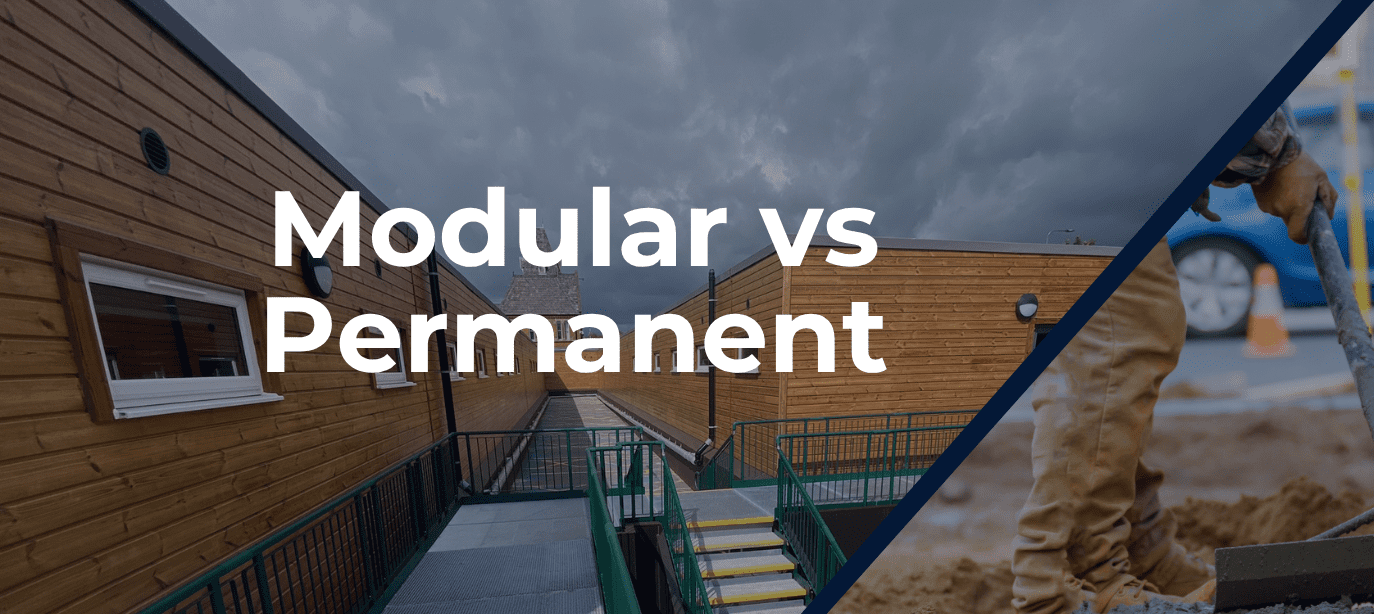Picture this: you’ve just been told your facility needs a compliant access ramp before the next inspection. Deadlines are tight, budgets are stretched, and disruption is the last thing you need. Do you go with a modular ramp that can be installed in hours, or a permanent ramp that blends into your building’s architecture?
For facilities managers, this decision reaches beyond a simple product choice. It’s a strategic call that affects not only compliance but also operational efficiency, project timelines, and long-term adaptability. The right ramp can help maintain site safety, minimise downtime, and support your organisation’s accessibility goals without overspending on construction or maintenance. The wrong one can cause costly delays, design limitations, or even compliance risks during future audits.
Whether you manage a healthcare site, an educational facility, or an industrial facility, understanding the trade-offs between modular and permanent ramps will help you plan for both immediate needs and long-term sustainability. Let’s explore the differences so you can make an informed choice that fits your site, budget, and future growth.
Modular Ramps: Fast, Flexible, and Future-Ready

Speed of Installation
Modular ramps can usually be assembled in just a few hours. There is no curing or drying time, so they are ready to use the same day.
Flexibility at Its Core
- Can be extended or reduced as your needs change
- Can be relocated to another part of your site
- Can be reused on a completely new property
This adaptability makes modular ramps ideal for leased premises, temporary sites, or businesses expecting growth and change.
Cost-Effective and Sustainable
- Lower upfront cost compared to permanent construction
- Minimal maintenance over time due to durable materials
- Reusable and reconfigurable, which reduces waste and supports sustainability goals like our Nexus Zero initiative and your ESG requirements.
Built-In Compliance
Most modular systems are engineered to meet accessibility legislation from the outset, with compliant gradients, secure handrails, and non-slip surfaces built in. This built-in compliance helps facilities teams reduce risk and ensure safe access without the need for complex design approvals.
Full accessibility, however, depends on more than the ramp itself. Every installation must also comply with Part M of the UK Building Regulations, which defines the legal standards for gradients, handrails, widths, and turning spaces to guarantee safe, inclusive access for all users.
Selecting a ramp system developed in line with Part M simplifies inspections, speeds up approvals, and helps avoid costly redesigns later. For a clear breakdown of these requirements including key measurements and practical advice for ongoing compliance – read our companion article: Part M Accessibility Requirements: A Practical Guide for Facilities and Property Managers
Explore our full range of modular ramps designed for commercial and public environments to see how modular systems can deliver compliance, flexibility, and long-term value
Permanent Ramps: A Fixed Investment
Installation and Disruption
Permanent ramps require groundwork, construction, and curing. This often takes days or weeks and can cause disruption to operations.
Architectural Integration
Permanent ramps can blend into a building design. Once built, however, they are fixed in place and difficult to change without demolition and removal of waste.
Higher Upfront and Ongoing Costs
- Construction and material costs are higher at the outset
- Weathering and ground movement mean more frequent repairs
Compliance Risks
Permanent ramps must be designed to precise standards to meet accessibility requirements and in some cases building control sign off and planning applications. Any design errors discovered after construction can be expensive to correct.
Learn more about our commercial accessibility services and how we support long-term facility planning.
Direct Comparison: Modular vs Permanent

Sustainability Spotlight: Nexus Zero
When a permanent ramp is replaced, demolition produces significant waste. Modular ramps, by contrast, can be reused, reconfigured, and even recycled at the end of their lifecycle. This makes them a smarter option for businesses working towards ESG and sustainability goals.
Our Nexus Zero initiative puts sustainability at the heart of accessibility. By choosing modular, you are not just making your site more inclusive – you are actively reducing your environmental impact.
Which Ramp Is Right for You?

If your facility is in a period of growth, change, or transition, modular ramps provide speed, adaptability, and cost savings. If your site is established and you want long-term integration into the building design, permanent ramps can be the right choice.
At Nexus Adapt, we partner with facilities managers to design and deliver the best solution for today while preparing for tomorrow.
Book a site consultation with our accessibility specialists to assess which ramp type fits your compliance, budget, and operational needs.


